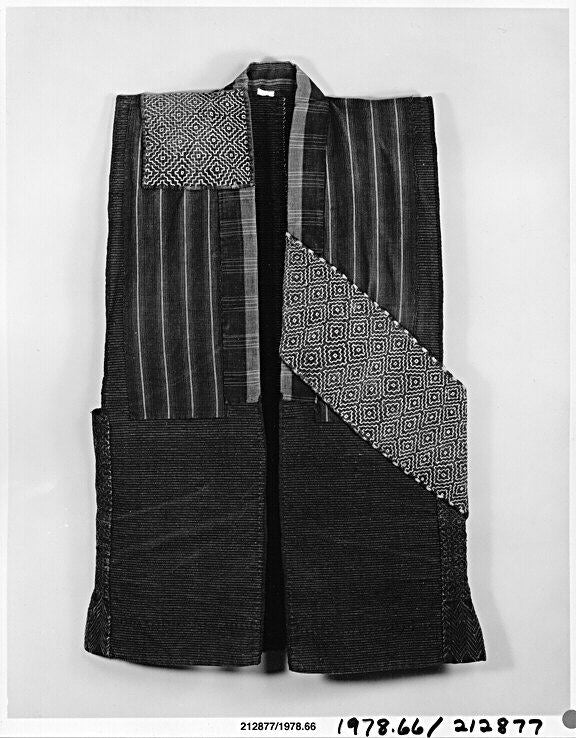A fashion out of necessity
Today stories about clothes that are worn by several generations may sound mythical, but they are actually true. One example could be boro (ぼろ), the garments of several time layers made in Japan from the 17th to the early 19th century. Boro or patched and many times mended garments came about out of sheer necessity, as scarce supply and high cost of fabrics forced people to reuse them several times before they wore out.
Every thread or scrap of fabric could save them from the freezing cold in winter or from the scorching sun in summer. Poverty forced people to make only functional clothes with low representational value. Construction of boro is essential, determined by necessity and traditions. Designs are distinguished by different patterns of patches and functions; for example, a blanket and a sheet for childbirth bodoko, winter jacket hanten, sleeping coat donja and other. Sashiko stitches that hold the scraps together are not hidden but rather intertwine with the fabric and reinforce it.
Bodoko, hanten and donja are all mended and patched up like armour to protect from the external effects. In theory, such garments could continue being repaired endlessly. Just like the Ship of Theseus, where rotten wooden parts were replaced by new ones, these garments could last for decades remaining the same, yet different. The garments have an implied frame and shape, which survive throughout the constant repair of fabrics.

Sleeveless work jacket assembled from many different fabrics, decorated and reinforced with sashiko embroidery, Metropolitan Museum of Art. Image source: Wikimedia Commons.
There is no need nowadays to do this even for those living in poverty. Today people in poverty make very cheap clothes for other people in poverty, who buy them for peanuts, and then throw or give them away for recycling. Buy cheap, wear little, discard either to the waste or recycling bin, and start from the beginning at the speed of your choice.
Perhaps technological progress will enable everyone to repair their clothes; or will make it possible to assemble clothes from easily replaceable components and offer them to buyers together with a spare sleeve or a spare collar.
The convention of patched or easy to assemble clothes doesn’t exist yet, but the patched jacket elbow has long been an established element of style. Necessity-driven rugged appearance now looks attractive, although in the past out of necessity clothing gave no reason to be proud of.
The boro aesthetics (only aesthetics) has been renewed and applied in high fashion for some time. In his collection for Spring-Summer 2020, Junya Watanabe created an impression of clothes that are inserted into each other, and combined “incompatible” fabrics.
Most probably inspired by the art of collages, Susan Cianciolo’s open stitches and combinations of different fabrics create a resemblance to a rag doll. Seemingly reckless and expressive stitches seem to reveal the movement of tailor’s hands.


